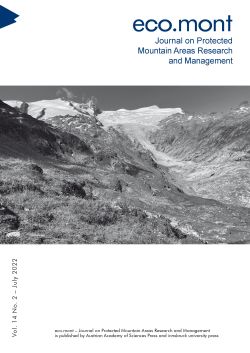
Eco.mont Vol. 14 Nr. 2, pp. 24-36, 2022/06/22
Journal on Protected Mountain Areas Research and Management

Artvin, located in the Caucasus ecological region, is a unique area due to its high mountains, climatic characteristics, terrestrial and aquatic ecosystems, and high biodiversity. Thus, it is a suitable area for examining the effects of landforms and climate on vegetation dynamics. Vegetation changes over a three-year period (2018 to 2020) were investigated by examining the trends in the Normalized Difference Vegetation Index (NDVI) across the study area. First, the relationships between mean temperature, total precipitation and landforms (elevation, slope, aspect and distance from the sea) were determined by regression analysis, and their interpolated maps were created. In the second stage, the effects of the same landform characteristics and climatic factors, such as total precipitation and mean temperature, on NDVI were analysed. Regression analysis showed that the relationships between precipitation and distance from the sea, and between temperature and elevation were statistically significant. They were therefore used for prediction modelling. Changes in temperature and precipitation affected the NDVI values, but precipitation was found to be more significant than temperature. Landform differences were also responsible for changes in the NDVI values; distance from the sea was the most significant factor. The study also shows that in the drier period (2018), the elevation range where NDVI decreases is lower than during the other periods (2018 and 2020). We therefore conclude that the alpine zone can be more affected during drought periods.
Keywords: NDVI, GIS, drought, regression, interpolation